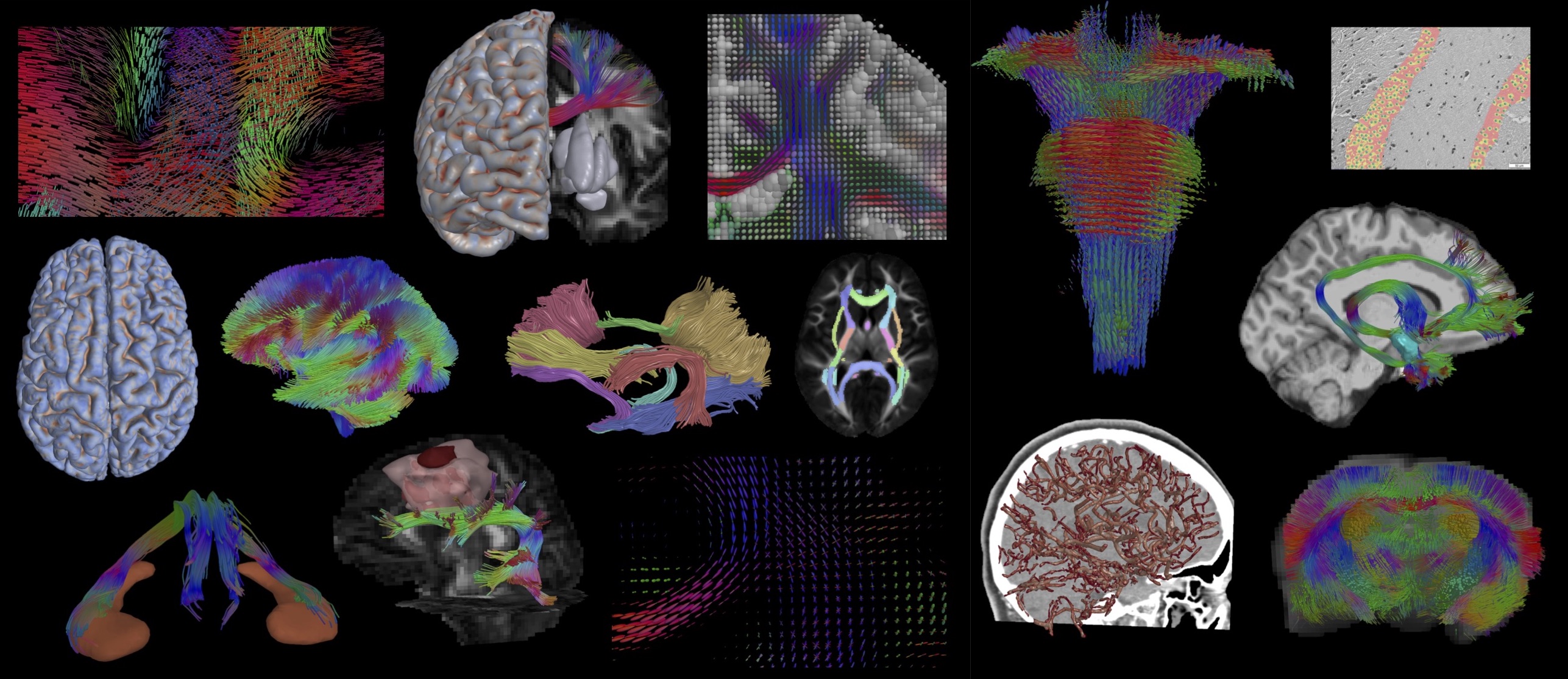
The Quantitative Imaging Toolkit
Welcome to the repository for the Quantitative Imaging Toolkit (QIT). QIT is a software package for visualization, exploration, and analysis of neuroimaging datasets. QIT supports a variety of magnetic resonance imaging (MRI) with advanced capabilities for mapping brain microstructure and connectivity using diffusion MRI, and it also has an expanding base of microscopy tools. You can learn more at the QIT website. Presently, QIT is only available as compiled binaries, which you can download through github releases.
What is QIT?
QIT is a software package of computational tools for the modeling, analysis,
and visualization of scientific imaging data. It was specifically developed
for tractography and microstructure analysis of diffusion magnetic resonance
imaging datasets, but it has capabilities that are generally useful for other
imaging modalities as well. It supports many different data types, including
multi-channel volumetric datasets, multi-label masks, curves, triangle meshes,
geometric primitives, tabular data, and spatial transformations. QIT provides
an application called qitview for interactive 3D rendering and data analysis,
as well as, a suite of command line tools available through a program named
qit that provides a way to do batch processing and scripting. In addition,
QIT also provides ways to integrate of these tools into grid computing
environments and scientific workflows.
How can I use QIT?
If QIT was used in part of your research, please cite the following abstract in associated publications:
Cabeen, R. P., Laidlaw, D. H., and Toga, A. W. (2018). Quantitative Imaging
Toolkit: Software for Interactive 3D Visualization, Data Exploration, and
Computational Analysis of Neuroimaging Datasets. Proceedings of the
International Society for Magnetic Resonance in Medicine (ISMRM), 2854.You can also find the license agreement for QIT use in the LICENSE file.
Build Instructions
You can build QIT by running ant in the root directory. This will create a
QIT package in dist. This requires the following packages to be installed:
How is QIT developed?
QIT is designed and developed by Ryan Cabeen, and it started in 2012 to support work for his Ph.D in the Department of Computer Science at Brown University.
QIT was developed using IntelliJ IDEA with a combination of Java (version 11 and above) and Python (version 2.7 and above). The package also uses the excellent open source resources listed below. In the QIT application directory, you can also find copies of their license files, as well as the separate jars for each library that are linked by QIT.
- Apache Commons CLI 1.2, released under the Apache v2 license
- Apache Commons IO 2.1, released under the Apache v2 license
- Apache Commons Lang 3.0.1, released under the Apache v2 license
- Gson, released under the Apache v2 license
- log4j 1.2.9 released under the Apache v2 license
- Guava 11.0.2, released under the Apache v2 license
- Jama 1.0.2, released into the public domain
- opencsv 2.3, released under the Apache v2 license
- reflections-0.9.8, released under the WTFPL license
- Jython 2.5.0, released under the Jython license
- jythonconsole-0.0.7, released under the LGPL v3 license
- Camino, released under the Artistic 2.0 license
- matrix-toolkits-java, released under the LGPL v3 license
- smile, released under the Apache 2.0 license
- jogl, released under the BSD license
- JPOP: Java parallel optimization package, released under the LGPL license
- object-explorer, released under Apache v2 license
- Logo, released under the Creative Commons license
The license documentation associated with each of these can be found in the
software package under doc/licensing.
Contact
Comments, criticism, and concerns are appreciated and can be directed to Ryan Cabeen at cabeen@gmail.com.